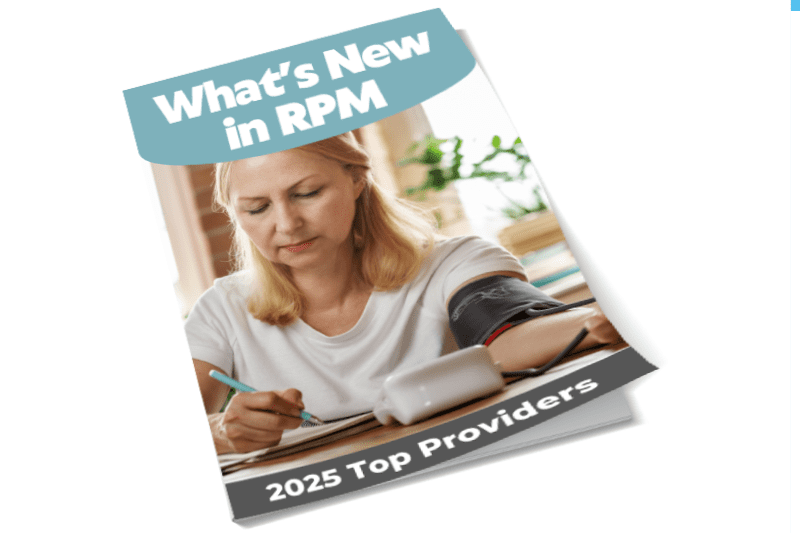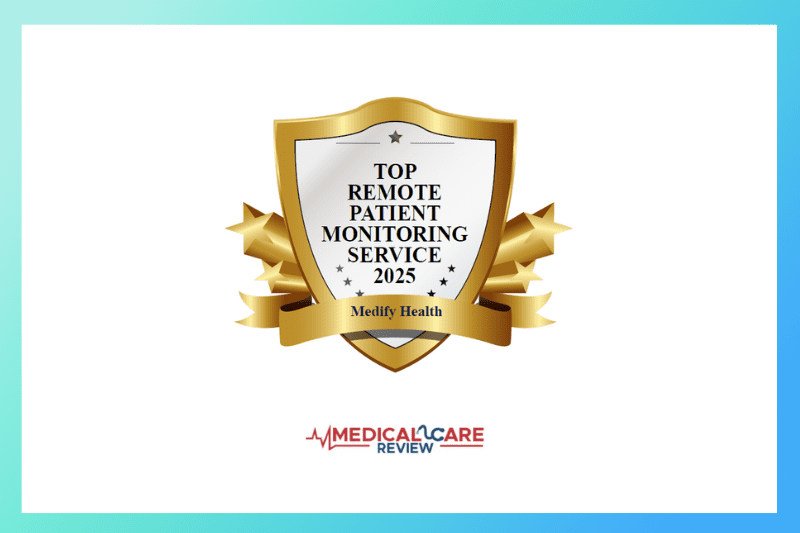
Remote Patient Monitoring (RPM) has rapidly emerged as a cornerstone of modern healthcare, empowering providers to reduce hospital admissions, boost patient engagement, and proactively manage chronic conditions. As the demand for RPM solutions grows—particularly among Medicare populations—technology vendors are racing to stand out with cutting-edge devices, AI-driven analytics, and comprehensive support services (American Telemedicine Association, 2023. https://www.americantelemed.org). Yet the real question for practices remains: Which RPM partner aligns best with specific clinical, administrative, and financial needs?
In this guide, we present our “Top 6 RPM Providers” list, offering an in-depth look at each contender’s tech sophistication, AI insights, and staffing support. Inspired by our latest white paper on Connected Health, we assembled our rankings with the goal of highlighting solutions that can integrate seamlessly into existing EMR/EHR systems while improving both patient outcomes and practice efficiency (KLAS Research, 2023. https://klasresearch.com). Whether you run a solo practice or lead a multi-facility group, these six providers represent the current leaders in RPM, tailored for a world where virtual care, proactive interventions, and holistic patient relationships define the future of healthcare.
Top 6 RPM Providers
1. Medify Health
Overview: Focuses on “People-First Virtual Care,” combining robust remote monitoring technology with a dedicated clinical staff that integrates seamlessly into any EHR/EMR platform (no technical learning curve for the practice or patient). Leverages AI-driven analyses of real-time vitals and SDOH data to proactively manage patient care.
Ratings
Tech (Capabilities & Ease of Use): 4.9/5
Offers 12+ advanced cellular-enabled devices to transmit patient data seamlessly.
No app requirement for patients, greatly reducing technological barriers.
AI-Driven Insights: 4.8/5
Real-time monitoring plus social determinants of health analytics, with clinically trained staff interpreting data for timely interventions.
Goes beyond automated readouts by gathering—and acting upon—patient preferences and circumstances.
Staffing Support (Clinical & Admin): 4.9/5
Highly selective team of RNs plus specialty experts (e.g., mental health, weight management, wellness).
Each patient is assigned a dedicated nurse who calls at least monthly, responds to alert triggers, and is available 24/7.
Full administrative support for billing, documentation, and data analysis.
Key Takeaways:
Medify Health is especially strong where many competitors fall short—providing end-to-end clinical staffing and administrative solutions alongside a deeply integrated remote monitoring platform. This all-in-one approach helps reduce practice workload while generating new revenue streams.
2. Health Recovery Solutions (HRS)
Overview: Well-known market leader in RPM technology, recognized for its strong industry partnerships. HRS is highly respected for robust vital-sign monitoring, patient engagement tools, and a track record of successful outcomes. However, its default model does not include clinical staffing; instead, it partners with companies (including Medify Health) to offer that service.
Ratings
Tech (Capabilities & Ease of Use): 4.2/5
Comprehensive RPM suite with video visits, customizable care plans, and intuitive dashboards.
Requires the practice to adopt the HRS platform, which may involve setup time and training.
AI-Driven Insights: 4.0/5
Offers predictive analytics, though insights are mostly generated from automated dashboards requiring staff interpretation.
Staffing Support (Clinical & Admin): 4.0/5
No in-house clinical staff by default; typically relies on partnerships or the client’s own staff.
Provides training and support for the HRS platform, though the practice may need additional personnel or partner resources for full care management.
Key Takeaways:
HRS is widely respected and excels in RPM technology itself. However, the lack of “built-in” clinical staffing often necessitates practice-based or third-party clinicians to maximize the platform’s impact.
3. Teladoc Health
Overview: Best known for telehealth visits and direct-to-consumer services, but also offers an RPM program for chronic care. Backed by a large platform and brand recognition.
Ratings
Tech (Capabilities & Ease of Use): 4.3/5
Integrates with multiple data sources and devices.
Larger platform can be more complex to navigate, but widely used by both consumers and providers.
AI-Driven Insights: 4.2/5
Continual AI development for telehealth triaging and chronic condition support.
Tools are robust yet primarily app-driven, requiring moderate patient tech-savviness.
Staffing Support (Clinical & Admin): 3.8/5
Mainly provides licensed physicians and therapists for telehealth visits.
Does not typically integrate deeply with local practice staff unless arranged.
Key Takeaways:
Teladoc shines in large-scale telehealth delivery but can be less flexible in specialized clinical staffing for smaller practices. The brand recognition is a plus, though.
4. AMC Health
Overview: Has been in the RPM space for many years, focusing on chronic disease management with a range of remote monitoring devices. Known for scalable solutions and partnerships with large health systems.
Ratings
Tech (Capabilities & Ease of Use): 4.3/5
Offers multiple RPM devices, though certain platform setups can be time-intensive.
AI-Driven Insights: 4.0/5
Provides data analytics and care alerts; deeper insights generally require additional modules or in-house staff to interpret.
Staffing Support (Clinical & Admin): 3.7/5
Administrative help is available; clinical staffing is typically optional or an add-on service.
Recommended for practices with some existing resources to handle the day-to-day patient interactions.
Key Takeaways:
AMC Health delivers reputable RPM tools and adequate support. Practices seeking fully outsourced staffing might need supplementary services.
5. VitalTech
Overview:
Emphasizes wearable devices and home-based monitoring. Integrates well with various health systems, featuring solutions for chronic conditions and post-acute care.
Ratings
Tech (Capabilities & Ease of Use): 4.4/5
Wearables and Bluetooth-integrated devices offer flexible connectivity.
Some patients or staff may require a basic technology orientation.
AI-Driven Insights: 4.1/5
Provides standard dashboards; limited advanced predictive modeling compared to top-tier solutions.
Staffing Support (Clinical & Admin): 3.6/5
Primarily a technology provider; on-demand support is available but may not cover full clinical management.
Key Takeaways:
VitalTech is a strong tech-focused solution with good interoperability. Practices with robust internal teams can leverage VitalTech effectively.
6. CareSimple
Overview:
A newer entrant focusing on user-friendly RPM for seniors, with simplified device setup and straightforward patient education. Often appeals to small and mid-sized practices seeking an approachable RPM platform.
Ratings
Tech (Capabilities & Ease of Use): 3.8/5
Good usability for older populations, though the device range is narrower than some competitors.
AI-Driven Insights: 3.6/5
Basic trending dashboards and alerts; advanced analysis may require additional software or staffing.
Staffing Support (Clinical & Admin): 3.5/5
Primarily supplies onboarding guides rather than deep clinical staffing.
Some administrative help for billing, but limited beyond that.
Key Takeaways:
CareSimple excels at user-friendly RPM geared toward seniors, but practices often add their own staff or partners to achieve a more comprehensive care model.
RPM Provider Ranking Summary
Each of these providers brings unique strengths in remote patient monitoring. Medify Health stands out for an all-in-one approach—particularly by removing tech burdens from practices and patients while providing robust clinical and administrative staffing. HRS remains a top-tier platform in raw technology and brand reputation, but it does not include clinical teams by default. Others, like Teladoc, AMC Health, VitalTech, and CareSimple, fill important niches in telehealth, large-system partnerships, device variety, and user-friendly design. Practices should select a partner that aligns with their specific needs for platform ease, AI-driven insights, and staffing.
Methodology
These rankings reflect a comprehensive review of publicly available vendor information, industry publications, and peer-reviewed data, coupled with direct insights from healthcare professionals actively implementing RPM. Each organization was evaluated against three primary metrics—technical capabilities, AI-driven insights, and staffing support—then scored based on performance in these domains. Interviews with clinical leaders helped us contextualize how each solution integrates into real-world workflows. Finally, we cross-referenced findings with aggregator reports and reputable third-party websites for objectivity. This multi-pronged approach ensures the resulting list provides a balanced, transparent snapshot of today’s top RPM providers.
References
American Telemedicine Association. (2023). Remote patient monitoring gains momentum.
https://www.americantelemed.org/remote-patient-monitoring-gains-momentum
Becker’s Hospital Review. (2023). Trends in remote patient monitoring.
https://www.beckershospitalreview.com
HRS (Health Recovery Solutions). (2023). Our approach to remote patient monitoring.
https://www.healthrecoverysolutions.com
KLAS Research. (2023). Remote patient monitoring solutions 2023.
https://klasresearch.com
Medify Health. (2023). Remote patient monitoring & chronic care management.
Teladoc Health. (2023). Teladoc RPM services overview.
https://www.teladochealth.com
VitalTech. (2023). VitalTech remote monitoring platform.



